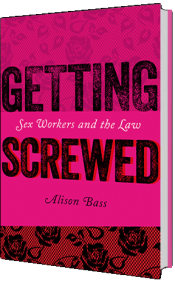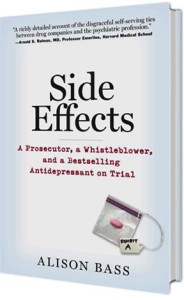A coalition of folks opposed to sex trafficking paraded last week in front of the Village Voice headquarters in Cooper Square, urging the shutdown of its classified website Backpage on the grounds that its online ads foster the trafficking of under-age prostitutes. About 20 people carrying pink umbrellas, including a priest and several nuns, marched in a circle chanting “Prostitution has to go” and “Sex Trafficking has to go.” A few held signs saying that the “Village Voice pimps children,” and several of the protestors had tapes over their mouths, ostensibly to signal that they were being silenced.
If anything, what has been silenced is the real story behind sex trafficking and how to eliminate it. Media reports about the controversy over Backpage often neglect to mention that shutting down such online classified sites does not curb trafficking. Indeed, police who investigate trafficking cases say it merely pushes the practice further underground and makes it more difficult for them to investigate the trafficking of under-age prostitutes or illegal migrants. Indeed, when craigslist shut down its adult erotic section under enormous pressure from conservative groups a few years ago, sex operators merely shifted to other websites (like Backpage) and myredbook.com, or continued advertising on craigslist in the casual encounter or therapeutic sections.
Independent sex workers (who are not trafficked or pimped) say that advertising on websites like Backpage, where they can screen customers themselves and decide who they want to service, makes it easier for them to practice safe sex (i.e. sex with condoms) and avoid risky situations like being picked up on the streets by strangers. As one sex worker who attended the protest last week to hand out literature giving the other point of view said, “Just shutting down Backpage is not going to end trafficking. It will simply put sex workers and trafficking victims into riskier situations.”
If the United States is truly interested in curbing trafficking, it might consider an entirely different approach: legalizing prostitution. Studies done in countries where prostitution is legal such as the Netherlands and Australia found that legalizing the trade and licensing brothels and sex workers actually reduces the amount of trafficking, particularly of under-age prostitutes. One major 2007 study done in the Netherlands to examine prostitution after the ban on it was lifted in 2000 found that legalization has succeeded in reducing number of underage workers and illegal immigrants working in the sex trade. “Minors were only very rarely found in licensed businesses,” and “researchers studying the non-legal prostitution sector did not encounter any underage prostitutes,” concluded the report, which was published online by a research institute funded by the Dutch Ministry of Justice known as Wetenschappelijk Onderzoek- en Documentatiecentrum (WODC).
The primary sponsor of last week’s protest, the Coalition against Trafficking of Women or CATW (which, according to its website, is opposed to all prostitution, not just trafficking) argues that legalizing prostitution will lead to an increase in sex trafficking. Yet the opposite appears to be true. The Netherlands, Australia and Germany, of all of which have legalized prostitution, received top marks from the U.S. administration in a 2005 Trafficking in Persons report, according to David Feingold, who coordinated the Trafficking-HIV/AIDs programs for UNESCO at the time.
By contrast, studies show that efforts to prohibit prostitution, such as Sweden’s 1998 law criminalizing the purchase of sex (a law much praised by groups like CATW) has actually exposed prostitutes to more dangerous clients and less safe-sex practices.
If we truly wanted to prevent the sex trafficking of children, we would legalize adult consensual prostitution and take all the millions of dollars spent every year in entrapping and arresting women who are selling sex by choice and spend that money on rescuing minors and immigrants who are truly being coerced into sex against their will (the UN definition of trafficking). We would also put more resources into helping teenage runaways (who comprise the vast majority of under-age prostitutes) get off the streets and into programs that keeps them safe and out of the hands of predators.
Canada is already moving in this direction, as I blogged about here. A few months ago, a federal appeals court overturned laws against prostitution in the province of Ontario, arguing that criminalizing sex work increased the risks of violence against women and made it harder for them to practice safe sex. The appeals court based on its ruling on research showing that laws against prostitution actually increase the likelihood of violence against sex workers and the chance they may spread sexually transmitted diseases like AIDS. For example, one study published in Social Science and Medicine last year found that criminalizing indoors sex work forced Canadian women to sell sex on the streets, making it more difficult for them to refuse clients who didn’t want to wear condoms.
Likewise, another study published in the British Medical Journal in 2009 found that of 237 street workers in British Columbia who were forced to sell sex outdoors (because they couldn’t see clients inside), more than half (57 per cent) experienced physical or sexual violence in an 18-month period.
So if groups like CATW really want to reduce sexual violence against women (which is one of their stated aims) and cut down on sex trafficking, they would work toward legalizing adult prostitution and improving services for teenage runaways instead of clogging the streets of East Village with pink umbrellas.



Trackbacks/Pingbacks